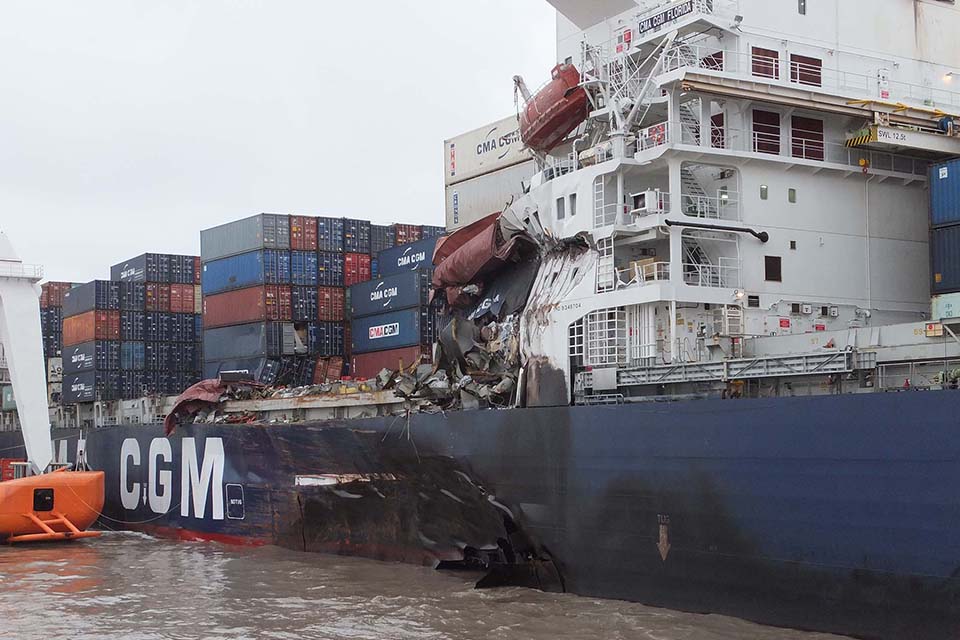Collision between container vessel CMA CGM Florida and bulk carrier Chou Shan
Location: 140 miles east of Shanghai in the East China Sea.
Accident Investigation Report 11/2014
Investigation report into marine accident including what happened, safety lessons and recommendations made:
(3,498.11 kb)

Summary
Collision between the container vessel CMA CGM Florida and the bulk carrier Chou Shan in open water 140 miles east of Shanghai on 19 March 2013. At 0033, CMA CGM Florida and Chou Shan collided in the East China Sea resulting in both vessels sustaining serious damage, and approximately 610 tonnes of heavy fuel oil being spilled from CMA CGM Florida. CMA CGM Florida had left Yang Shan, China, the previous day and was heading towards Pusan, Korea. Chou Shan was heading from Qinhuangdao, China, towards the east coast of Australia.
Safety lessons
- VHF radio was inappropriately used by both vessels for collision avoidance to negotiate a manoeuvre that was contrary to the COLREGS
- VHF radio communications were conducted in Mandarin and were not fully translated into English to enable the OOW on one vessel to understand what had been tacitly agreed
- standing orders on both vessels lacked specific metrics for when the master was to be called
- use of AIS priority and the multiple AIS target list encouraged the OOW on one vessel to focus on those vessels with the smallest CPA or range at the expense of maintaining a more strategic overview of the traffic situation
Recommendations
CMA CGM International Shipping Company PTE Ltd (CMA CGM) and Sincere Navigation Corporation have each taken action aimed at preventing a recurrence. A recommendation has been made to CMA CGM for it to take appropriate measures to ensure its company shipboard policies and procedures are adhered to and that its masters recognise the importance of engaging with and motivating crew in the safe and efficient management of its vessels. Sincere Navigation Corporation has been recommended to review and amend its safety management system to ensure that VHF radio is not normally used for collision avoidance and that its masters are empowered to provide specific metrics in their standing orders as to when they should be called by the officer of the watch. The International Chamber of Shipping and the Maritime and Coastguard Agency have been recommended to update their respective guidance on the use of AIS data for collision avoidance.
Published: 1 May 2014